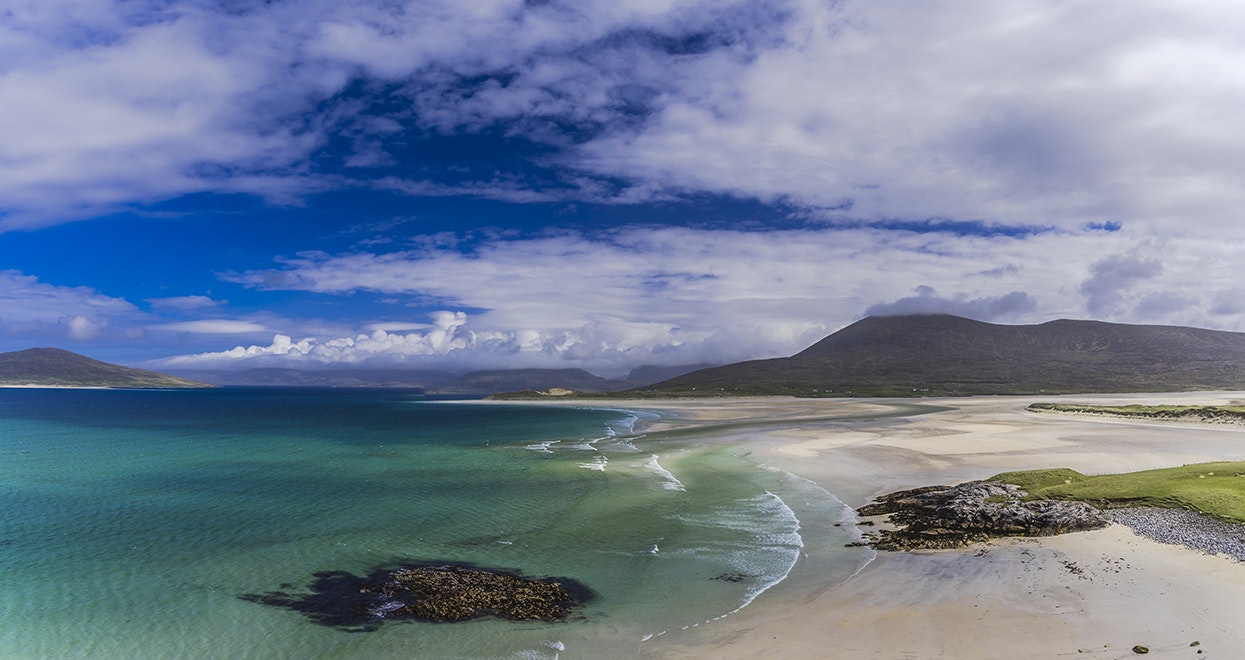
Ponant’s 12-day expedition cruise from Dublin to Tromsø, with stops in the Hebrides and Lofoten, is a journey for travelers with romantic sensibilities. The itinerary begins in that most literary of cities, Dublin, and includes stops at islands that were home to age-old Irish monasteries, remote rocky outposts in the middle of the North Sea, and ports where the Viking past is still palpable today. The landscapes you will encounter range from rolling heathland to the dramatic fjords of Norway.
For naturalists, there are opportunities to spot countless seabirds and marine mammals and you’ll even sail through a fjord named after the trolls said to reside there (note, however, that Ponant is unable to guarantee troll sightings). If what you most remember is the people you meet on your journeys, you’ll be delighted by the warm welcomes you receive in Irish pubs, the Scottish isles, and in Tromsø, a surprisingly sophisticated city that has been called the Paris of the North. This journey aboard the 132-stateroom L’Austral is exceedingly rich both culturally and in terms of its natural settings. It’s an opportunity to explore parts of Northern Europe that remain off the beaten path, even millennia after some of them were first settled.
Note: This itinerary is subject to ice and weather conditions. The expedition highlights and itinerary described here, including wildlife sightings, illustrate possible experiences only and cannot be guaranteed.

You’ll start your cruise in Dublin, Ireland’s charming capital on the east coast of the country. It is a city of poets and storytellers, including historic figures like Joyce, Yeats, and Wilde, but also the present-day owners of pubs and shops who will happily share the famous Irish gift of gab with visitors. You can spend the day before you board L’Austral visiting sights including Trinity College, home of the Book of Kells, or following in the footsteps of Leopold Bloom, the protagonist of James Joyce’s Ulysses.
If you are most interested in Ireland’s struggle for independence, you may want to visit the General Post Office (the principal site of the Easter Uprising) and walk along O’Connell Street, Dublin’s grandest boulevard. Another option, however, is simply to choose to get lost in the alleys and streets of Temple Bar, a neighborhood famous for its many pubs, restaurants, and stores. Embarkation begins at 4 p.m. for a 6 p.m. departure, so you’ll have time to get a taste of Dublin before you set sail.

You’ll wake up today in another country when you arrive in Portrush, in County Antrim, one of the six counties that form Ulster, or Northern Ireland, part of the United Kingdom. Portrush has been a pleasant and popular resort town since the 19th century, with its three wide sandy beaches and many seaside hotels and teashops. It’s also close to one of Ireland’s most famous sites, the Giant’s Causeway, an hour by car to the northeast of town. While according to legend, the causeway was built by the giant Fionn mac Cumhaill so that he could cross the North Channel to fight the Scottish giant Benandonner, geologists now agree that the 40,000 or so interlocking basalt columns were the result of volcanic activity. The natural wonder has been on UNESCO’s list of World Heritage Sites since 1986.
If you are a fan of Irish whiskey, the causeway is just a few miles from Bushmills, home of the Old Bushmills Distillery known for both its blends and single malts. Halfway between Bushmills and Portrush, Duncle Castle was, at different points, the seat of both the MacDonnell and the MacDonald clans. It has been abandoned since the 17th century, and its atmospheric ruins overlooking the sea offer a postcard-perfect photo opportunity.
You stop later in the day at the southernmost island of the Hebrides, Islay—the Queen of the Hebrides. You’ll have time to explore the island, known for its distilleries—there are eight of them, on an island with a year-round population of only around 3,200. Connoisseurs praise Islay’s whiskies for their distinct smoky notes and peat flavor, said to be the result of the water and particular barley used to create them. Even if you aren’t a drinker, the island offers opportunities to explore on foot or bike, perhaps spotting some of the many birds that stop here. Exploring is made even more pleasant given Islay’s unusually mild climate due to the warming effects of the Gulf Stream which are all the more pronounced in the summer when the Ponant expedition cruise calls there.
For travelers captivated by the saga of Scotland’s history, Islay was long the center of power in western Scotland as the seat of the Lords of the Isles. From the 12th to the 16th centuries, the Lord of the Isles rivaled the kings of England and Scotland, and while James IV of Scotland eventually seized all their lands, Prince Charles, the current heir to the British throne, still counts Lord of the Isles among his titles. A number of abandoned castles and other sites on Islay recall this fascinating period of Scottish history.
